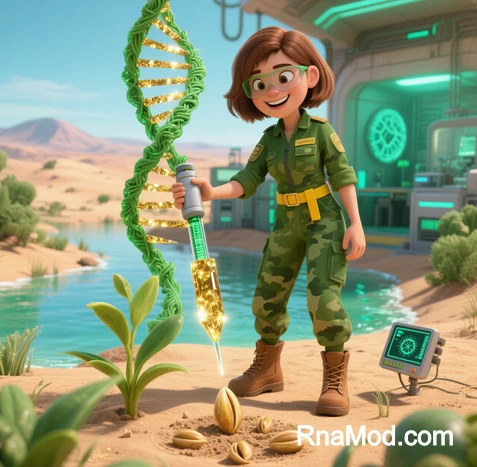 I. Historical Enigma: The Unresolved Inheritance Puzzle
I. Historical Enigma: The Unresolved Inheritance Puzzle
For 160 years, the genetic mechanisms underlying Gregor Mendel’s seven classic pea traits remained partially obscured. While four traits (seed shape, cotyledon color, flower color, plant height) had been molecularly characterized, three critical phenotypes persisted as scientific mysteries:
- Pod color (yellow vs. green)
- Pod shape (constricted vs. inflated)
- Flower position (axial vs. terminal)
(Fig. 1: Mendel’s seven pea traits)
Description: Illustrated comparison of phenotypic variations studied by Mendel, highlighting pod morphology, seed characteristics, and floral architecture.
II. Research Architecture: A Multidisciplinary Odyssey
Led by Dr. Cheng Shifeng at the Agricultural Genomics Institute at Shenzhen, an international consortium employed integrated methodologies:
A. Experimental Framework

B. Technical Innovations
- High-Resolution Haplotype Map: First comprehensive variant catalog for Pisum sativum
- Multi-Omics Integration: Combined genomics, transcriptomics, and classical genetics
- “Mendel’s Garden” Reconstruction: Cultivated historical variants in controlled environments
III. Molecular Revelations: Resolving Century-Old Mysteries
A. Pod Color (Yellow/Green)
- Gene: Stay-Green homolog (SGR)
- Mechanism: Frameshift mutation disrupting chlorophyll degradation final step
- Phenotypic Impact: Accumulation of undegraded chlorophyll in green pods
B. Pod Shape (Constricted/Inflated)
- Genes: PvIND and VvAGL11 orthologs
- Mechanism: Tandem transcription factors controlling valve margin differentiation
- Structural Consequence: Lignification defects causing constriction
C. Flower Position (Axial/Terminal)
- Gene: Co-Receptor Like Kinase (CRLK)
- Mechanism: Loss-of-function mutation altering auxin transport in meristems
- Developmental Effect: Conversion to clustered inflorescence architecture
(Fig. 2: Gene-to-trait mechanistic pathways)
Description: Molecular diagrams illustrating mutation effects on pod development (left), chlorophyll metabolism (center), and floral meristem organization (right).
IV. Expanded Genetic Landscape: Beyond Mendel’s Seven
The study simultaneously mapped 372 agronomic traits, revealing:
- Novel Alleles: Four previously undocumented variants in R (seed shape) and Le (stem length) genes
- Quantitative Trait Hotspots: Genomic regions controlling:
Trait Category Key Genes Breeding Relevance Nitrogen Fixation NIN/SYM orthologs Enhanced root nodulation Yield Architecture PsAP2/DREB Pod number optimization Drought Tolerance PsbHLH Climate resilience
(Fig. 3: High-resolution haplotype map)
Description: Circular genome visualization highlighting trait-associated loci, with Mendel’s seven genes marked in gold.
V. Mechanistic Diversity: Mutation Spectrum Analysis
The research uncovered four distinct molecular pathways causing phenotypic variation:
- Nonsense Mutations: Premature stop codons in CRLK (flower position)
- Structural Variants: 12-bp deletion in SGR (pod color)
- Epigenetic Modulation: CHH methylation silencing VvAGL11 (pod shape)
- Cis-Regulatory Changes: Promoter mutations altering Le expression (dwarfism)
VI. Translational Impact: Precision Breeding Revolution
A. Molecular Toolkit Development
- Diagnostic Markers: 23 Kompetitive Allele-Specific PCR (KASP) markers for trait introgression
- Haplotype-Based Selection: Accelerated development of “semi-leafless” varieties with 17% yield increase
B. Educational Transformation
- Modernized Genetics Curriculum: Replacing theoretical models with empirical molecular pathways
- Interactive Pea Trait Simulator: Web-based platform demonstrating gene-trait relationships
VII. Interdisciplinary Legacy: Bridging Eras of Science
This research achieves four historic integrations:
- Temporal Synthesis: Connecting 19th-century observation with 21st-century molecular biology
- Methodological Unification: Merging Mendelian crosses with CRISPR functional genomics
- Translational Bridge: Converting genetic insights into breeding applications within five years
- Global Collaboration: China-UK research partnership resolving foundational biological questions
“We’ve closed the final chapter of Mendel’s original manuscript while opening a new volume in precision genetics – where historical insights become future solutions.”
— Dr. Cheng Shifeng, Nature Interview
(Fig. 4: Mendel’s garden reimagined)
Description: Photo comparison of 19th-century pea specimens (left) with CRISPR-edited variants (right) in reconstructed experimental plots.
Future Horizons: The Pea Genomic Renaissance
Three emerging frontiers demonstrate ongoing impact:
- Legume Translational Network: Orthologous gene editing in soybean and chickpea
- Synthetic Pea Chromosomes: Engineering climate-resilient “Mendel 2.0” varieties
- Educational Heritage Project: Global seed distribution of historic pea accessions
Data sourced from publicly available references. For collaboration or domain acquisition inquiries, contact: chuanchuan810@gmail.com.
